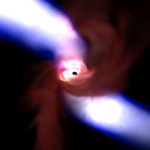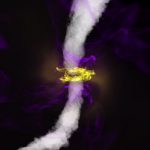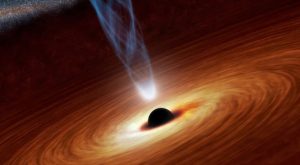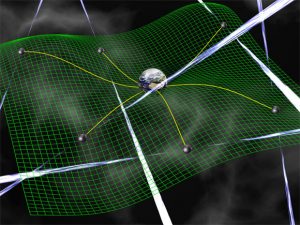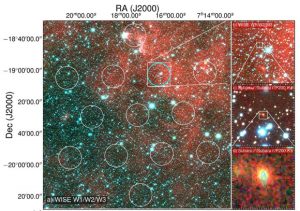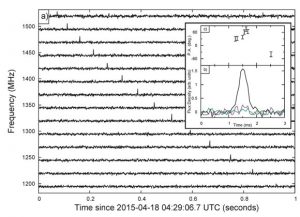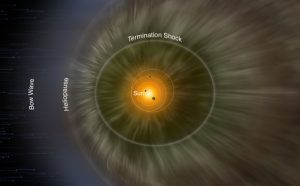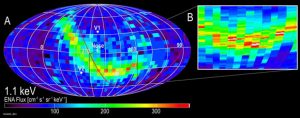Climate Change Threatens Boreal Coniferous Forests
Earth

Impending change for the dark taiga: Global warming is causing an increase in the frequency of forest fires in boreal coniferous forests. This means that deciduous trees, which generally only appear as pioneer plants, could potentially dominate the landscape in the long run. Credit: MPI of Biochemistry, S. Tautenhahn
New research from the Max Planck Institute of Biochemistry reveals that Boreal coniferous forests could see increased occurrences of fire as a result of global warming, with deciduous trees becoming more dominant in the future.
Climate change is transforming the Earth, particularly in high-latitude regions. The boreal coniferous forests of the northern hemisphere will witness an increased abundance of deciduous trees. This is according to discoveries made by an international team of researchers headed by Susanne Tautenhahn, formerly a scientist at the Max Planck Institute of Biochemistry and now working at Friedrich Schiller University Jena. These changes will, in turn, have an impact on the climate – whether global warming will be intensified or decelerated as a result, however, is something that remains to be seen.
The effects of climate change in recent decades have been tangible. And these could potentially become even more serious by the end of the century, even if we do somehow manage to limit global warming to 2 degrees, the latest de facto target for global climate policy. “Even the latest rise in temperature is leading to an increased frequency of extreme weather events,” says Susanne Tautenhahn. She predicts that storms, intense rainfall and thunderstorms will all become more commonplace. The appearance of the Earth is also being transformed as a result of climate change, and this is something that is already being observed, particularly in the cold temperate zones.
Here – from Canada and the US, to Scandinavia and through to Russia and Japan – boreal coniferous forests are still growing. These forests were the subject of a study carried out by Susanne Tautenhahn at the Max Planck Institute of Biochemistry in Jena. Tautenhahn, now a scientist at Friedrich Schiller University Jena, and her colleagues from Jena, Freiberg, Leipzig, Krasnoyarsk (Russia) and Gainesville (US) are using a combination of field studies and statistical modelling approaches to show, for the first time, the radical impact climate change is set to have on these forests. Today, the forest dynamics of the Siberian dark taiga show the prevailing growth of spruce trees, firs and pine trees. Deciduous trees here only appear shortly after disruptions such as fire, i.e. in an early stage of succession, in which various plant species recolonize disturbed habitats one after the other. According to the findings of the researchers, however, global warming will set in motion a chain of events here that will pave the way for the long-term domination of deciduous hardwoods. “Boreal forests are one of the largest stores of carbon on Earth, and two-thirds of these forests are located in Siberia,” says Tautenhahn. Thus, the expectation is that any changes in these forests will have repercussions on global climate.
Forest fires in the taiga to increase as a result of climate change
Forest fires are the reason for this emerging change in the taiga. “Fire acts as an important regulator in the natural development cycle of forests,” says Tautenhahn. Only through the destruction of old tree stock can new plants populate large surface areas. “However, climate change is intensifying the frequency and strength of fires, for instance due to lightning strikes, and the natural regeneration processes are being thrown out of balance,” explains the scientist.
In multiple expeditions lasting several months, Tautenhahn and her colleagues surveyed previously burned areas along the Yenisei River in Siberia. They counted the number of seedlings that have become established since the fire as well as the number of old trees that survived the fire – as the seeds of these trees could ensure new growth. On the basis of this data and with the aid of satellite images of the region, information on the severity of the fires and on the time periods that have elapsed since the fires, the researchers were able to develop a model that can, for the first time, track in detail the regeneration of the forest.
Cooling as a result of higher albedo and increased evaporation
Here, it became clear that the re-colonization of conifers is limited because their ability to disperse their relatively large seeds is limited. Conifer seeds are usually transported by the wind and can only travel relatively short distances. This makes it difficult for the trees to extensively re-colonize burnt areas, especially after severe fires with large burn zones. The seeds of deciduous trees, on the other hand, are very small and capable of covering long distances with the wind. This means that they can take over treeless surfaces a lot quicker and dominate these areas for the long term, even up until the late stage of succession. This advantage can be exploited to its full potential when fires are more intense and have larger burn zones.
What this change means in concrete terms for the global climate is currently the subject of intense discussions by researchers: they predict that the increased abundance of deciduous trees in the boreal forests of North America will slow down global warming in the medium term and reduce the occurrences of fire; in the long run, they expect the cooling effect to weaken the fire regime in North America, thus enabling a re-colonization of conifers. In contrast, however, Susanne Tautenhahn and her colleagues predict another effect for the Siberian forests in the long term. “As in North America, the Siberian dark taiga will also see a cooling period thanks to a higher albedo and higher evaporative cooling in the medium term. This cooling will be felt around the world,” says the Jena-based botanist. At the same time, however, the reduction of the typical Siberian conifers, which store high levels of moisture at ground level, will increase the likelihood of forest fires even further. “This can become a self-reinforcing process that could effectively change the eco-system and pave the way for the dominance of deciduous trees on a long-term basis in Siberia. “We do not know whether the taiga will store more or less carbon with a changed stock of trees.” This means that the researchers are still unable to accurately predict the impact of the change on the climate. However, the feedback is most likely negative since albedo and evaporative cooling increase.


